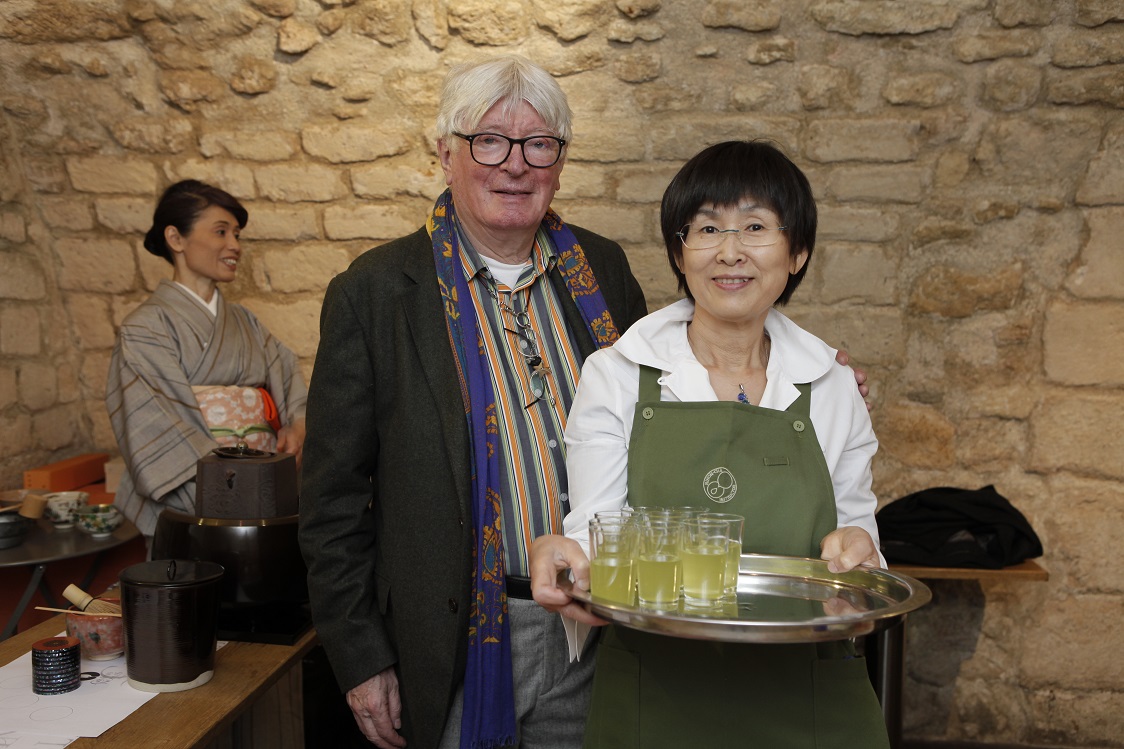
From Music to Japanese Teas: Misako Lelong-Nohsoh, an Ambassador’s Journey
Nothing in her earlier life suggested that Misako Lelong-Nohsoh would become an ambassador for Japanese teas in France, except perhaps that she has an extremely curious mind and a taste for challenges.
“Impossible is not Misako,” says her best friend, translator Sophie Refle. Misako grew up in Japan in a family running a clothing shop. Tea was an everyday drink in their home. Tea was not given any special consideration. However, as she explains today, her first contact with tea was in her childhood. Her parents rented a house from a florist who sold tea accessories among his flowers. Every week, he brought a tea instructor to her parent’s house for a course on senchadô. This class was part of Misako’s world as a child, but she didn’t pay attention to it at the time. Tea didn’t interest her. As the eldest daughter, she was the one expected to take over the business. But at 15, she had other plans. She developed a passion for music. She learned how to play the viola and became a professional violist in an orchestra in Japan.
She went to Berlin from Japan to study with Claude Lelong, an illustrious French teacher and solo violist of the Berlin Opera Orchestra. Lelong affectionately describes her as a particularly gifted pupil whose late start in learning the viola was undetectable. The gifted pupil returned to Japan, rejoined her orchestra, and married Claude Lelong. Lelong joined her in Japan, where he was a guest professor at major Japanese universities. After nine years, in 2007, the couple decided to move to France. And it was there that tea caught up with her, and she became the ambassador of Japanese tea in France.
From music to tea
This new direction is linked to two inseparable memories, revelation and consternation. The revelation was the authentic sencha prepared one morning by a friend she was staying with; the consternation was at the poor quality of the tea offered by a Japanese restaurant in Paris. “The chef was Japanese! I was saddened by the idea that the French would think this was Japanese tea,” she says.
Not having resumed her musical career on her arrival in Paris, she decided to devote herself to tea. In 2012, she embarked on a two-year training course.
Years of training
Misako contacted the Institute of Tea Instructors in Japan. This independent organization collaborates with the Japanese Ministry of Agriculture. It was founded in 2000 by producers, researchers, and wholesalers with the aim of training Japanese tea specialists in two stages. The first stage, designed to train advisors, can be taken by correspondence and, therefore, by people living abroad like Misako. It is dedicated to all aspects of Japanese tea: botany, agriculture, the manufacturing process, and the economics of tea. Learning is done by studying manuals and writing reports. In 2012, after this year of theoretical training, she obtained the qualification of Nihoncha advisor. In the same year, she founded an association with her husband to promote Japanese tea and started to organize seminars in their home.
The following year, she embarked on the second stage of the training, which required trips to Japan, where the two exams were held. It was a challenge because, at that time, the success rate was only about 30%. It took more than that to discourage our musician, who was used to playing complicated scores! The first exam, which she passed, validated her theoretical knowledge. The second exam consisted of several practical tests: arranging teas in increasing order of quality, brewing teas, defining their quality according to their appearance, and finally, giving a lesson on a variety of tea. She started her activities in the spring 2014 after passing her instructor’s certification.
Ambassador of Japanese teas
During her training, Misako got to know the leaders of the Japanese tea exporters’ organization thanks to the association’s experts with whom she trained. In 2015, her contacts in Germany with the German Japanese Friendship Association and the Japanese Embassy enabled her to participate in an event in Berlin promoting exports.
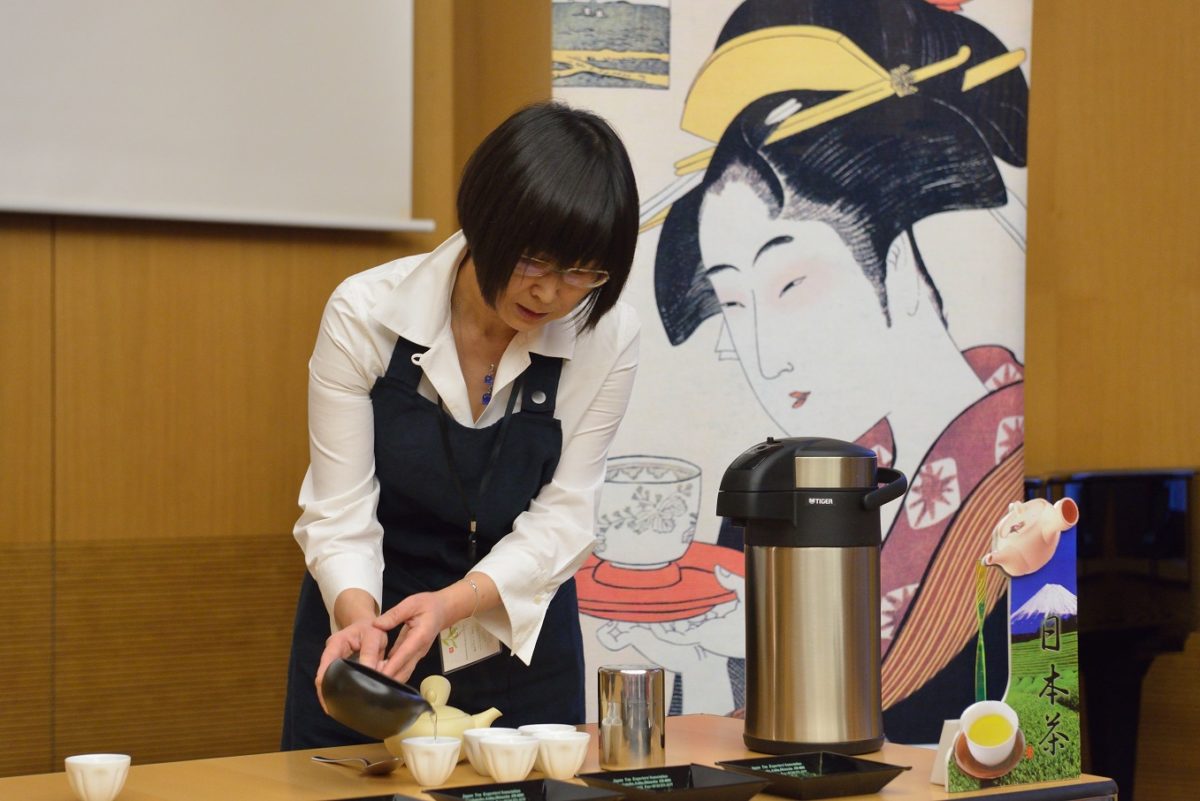
The following year, the Institute of Japanese Tea Instructors introduced the title “Japanese Green Tea Ambassador” for instructors living abroad. Their mission is to promote and disseminate Japanese tea in various ways: competitions, tastings, and training sessions on its preparation. She applied and was appointed at that time. The mission she had set herself through the association she had created in France with her husband thus became an official mission.
Following the first event organized in Germany, she continued to organize various events to promote Japanese teas in Europe.
A very involved ambassador: the Japanese tea competition in Paris
But let’s go back to her early days as an ambassador. In 2017, Euro Japan Crossing, a Franco-Japanese events company based in Paris, launched a Japanese tea competition, the Japanese Tea Selection Paris, as part of a first festival entitled “C’est bon! Le Japon” (‘It’s good! Japan’). The jury was made up of people with connections to Japan. The director of the agri-food department at the Paris office of JETRO (Japan External Trade Organization), Ms. Ônishi Akiko, solicited Misako and asked her to support the competition, which she did the following year for both the competition and the festival. Some 40 teas competed. For its third year in 2019, to make it a fully-fledged event with a real influence, and in agreement with the organizers of ‘C’est bon! Le Japon’, the competition became independent of the festival. Its format was redefined to make it part of a resolutely gastronomic approach, as shown by the composition of the new jury, which was drawn from the world of tea, wine, aromas, and gastronomy. Its president was and still is the Michelin-starred chef Nicolas Sale, former chef of the Ritz in Paris and international president of the gastronomic association ‘Les Disciples d ‘Escoffier.’
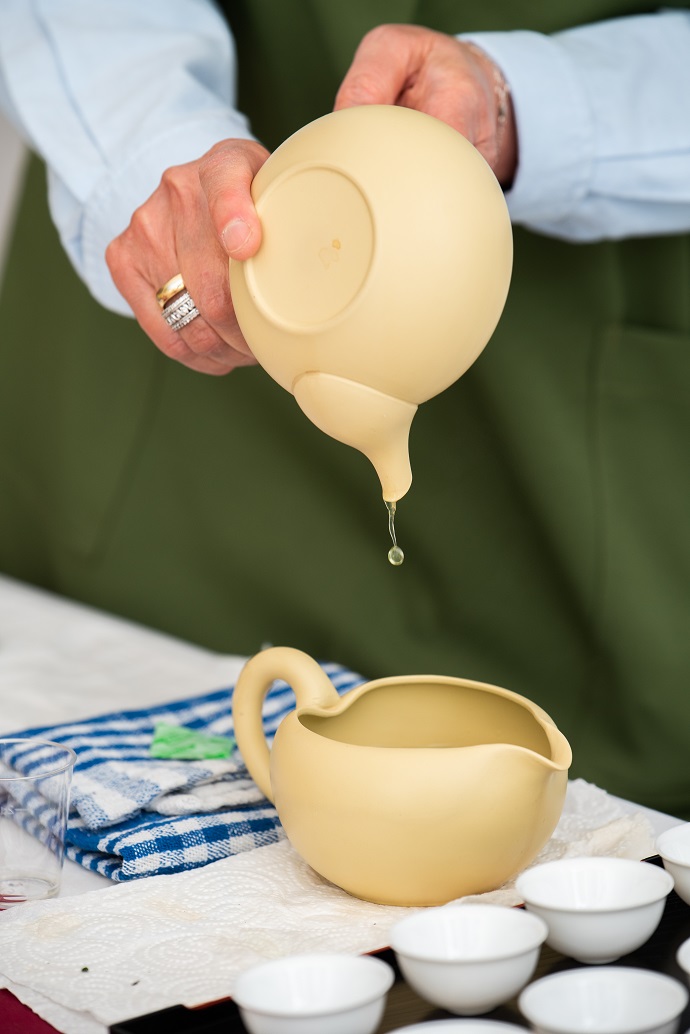
The number of participants increased sharply, with 140 teas in competition. Misako oversaw every competition detail, tasting all the teas and overseeing their preparation. After a pause during the pandemic health crisis in 2020, the competition grew, with more than 230 participants in the last three years.
Promoting Japanese teas in the land of coffee drinkers
In France, only 10% of tea is bought in specialized shops. It is mostly flavored teas. Developing a market in France is a challenge. Misako is constantly thinking about the meaning of the competition. Because of Japan’s declining tea consumption, finding outlets abroad is essential to support Japanese tea producers and the entire sector. For the ambassador, the competition makes sense because, beyond this support, it allows her to understand the tastes of the French in terms of Japanese tea and their reaction to the teas they taste. She is convinced that to ensure the future of Japanese tea, those living outside Japan must pass on this feeling to the producers and various players in the sector to adapt their offer to French and European consumers.
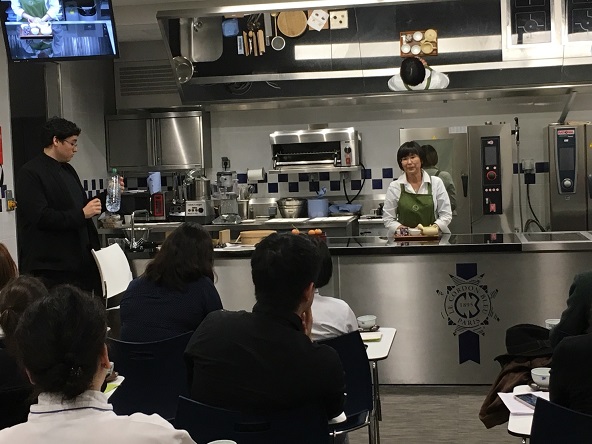
A mission: to democratize
For most of us, Japanese tea is inseparable from the word ‘ceremony’ and is therefore perceived as an art that is as intimidating as it is codified. This happens both in the West and even, surprisingly, in Japan. Indeed, as Misako explains, “For a long time, sadô, as it is called in Japanese, was only accessible to people of a rather high social rank, or at least to those who had a high level of income. There are several “arts” in Japan that are called something-dô, like shodô (calligraphy), judô, or kendô. Dô means that it is an art in which one is always confronted with oneself and tries to improve oneself. For me, sadô, or tea ceremony, is not only about preparing matcha according to the rules of the art and tasting it, but it is about making this time and this space beautiful and offering an overall experience that will be difficult to forget.” In other words, she wants to make Japanese tea accessible, to make it an everyday drink like coffee, black tea, herbal teas, or wine, detached from any ceremony. And to do this, “we have to start by getting rid of the prejudice that Japanese tea = tea ceremony.”
Japanese tea is easy!
Let Misako guide us in choosing and preparing Japanese teas. To choose quality teas, you have to observe them. For example, a sencha-futsumushi (standard) should have a uniform color and brightness. The shape of the leaves is important, as is the aroma. Quality tea has a fresh scent. “When you prepare it, it should have a light green color, transparency, and density. Regarding taste, there must be a balance between sweetness, shibumi, and bitterness.”
Her preparation advice is far from the codification attached to prejudices about Japanese tea. “It’s a drink, and what matters, in the end, is to prepare it so that the person who drinks it finds it good. The way I prepare it is the way Japanese people like to drink it. Sencha tastes very different depending on how it is brewed, and if I have any advice to give, it would be to say that the better the quality of a sencha, the more moderate the water temperature should be (60 to 70 degrees), and that the tea should brew for 75 to 120 seconds. Like most Japanese green teas, water over 80 degrees brings out bitterness. It is, therefore, better to use warm, not hot, water if, like most French people, you don’t like bitter.” Another recommendation: “If you prepare the tea with cold water, you will always have good tea. All Japanese teas, hôjicha, genmaïcha, and sencha, will be deliciously prepared with cold water.”
One must mention ceramics before leaving Japanese tea and its ambassador. The teapots used by Misako are clay teapots made from rice paddy soil. These classically shaped teapots with a 90-degree handle are made by Maison Takasukétôen, a potter in Tokoname, Japan’s oldest and most important pottery center. The company says these teapots are fired between 1200 and 1300 degrees Celsius, producing a sekki ceramic between earthenware and porcelain. They then reveal a final secret: “It is said that if you prepare tea in an iron-rich clay, the bitterness is less pronounced.”
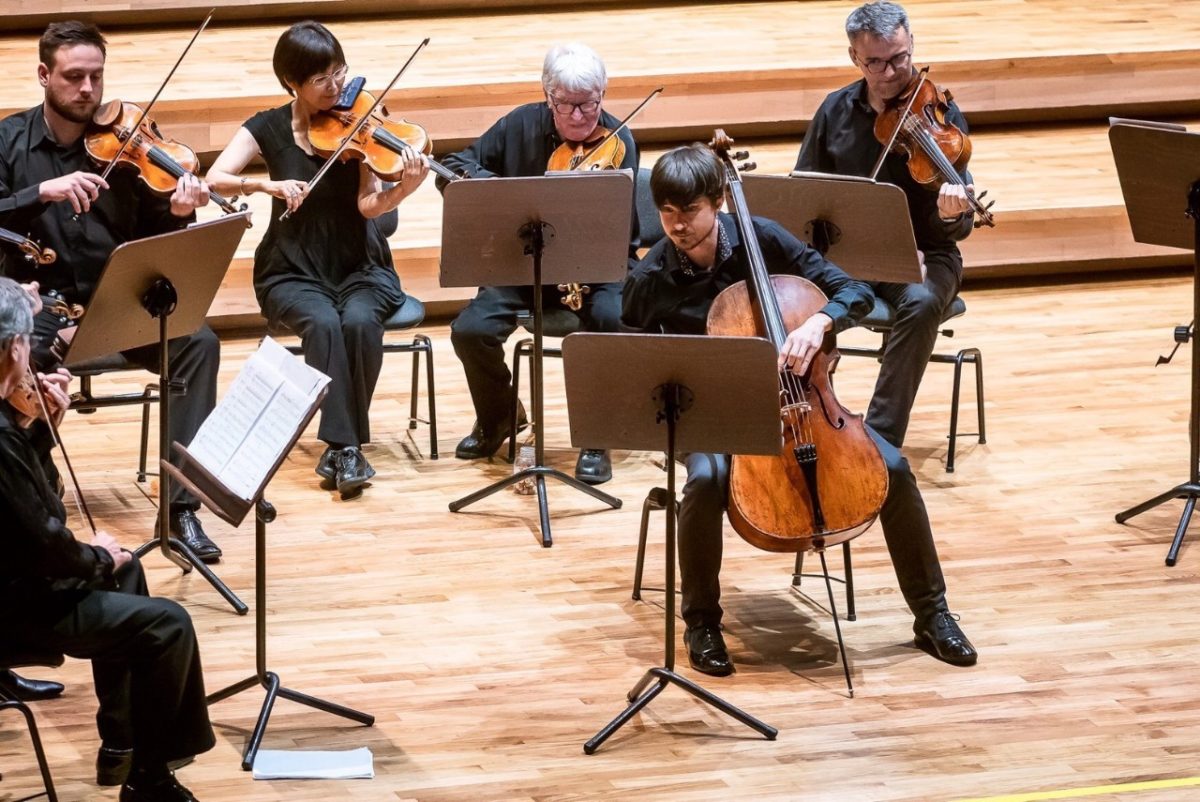
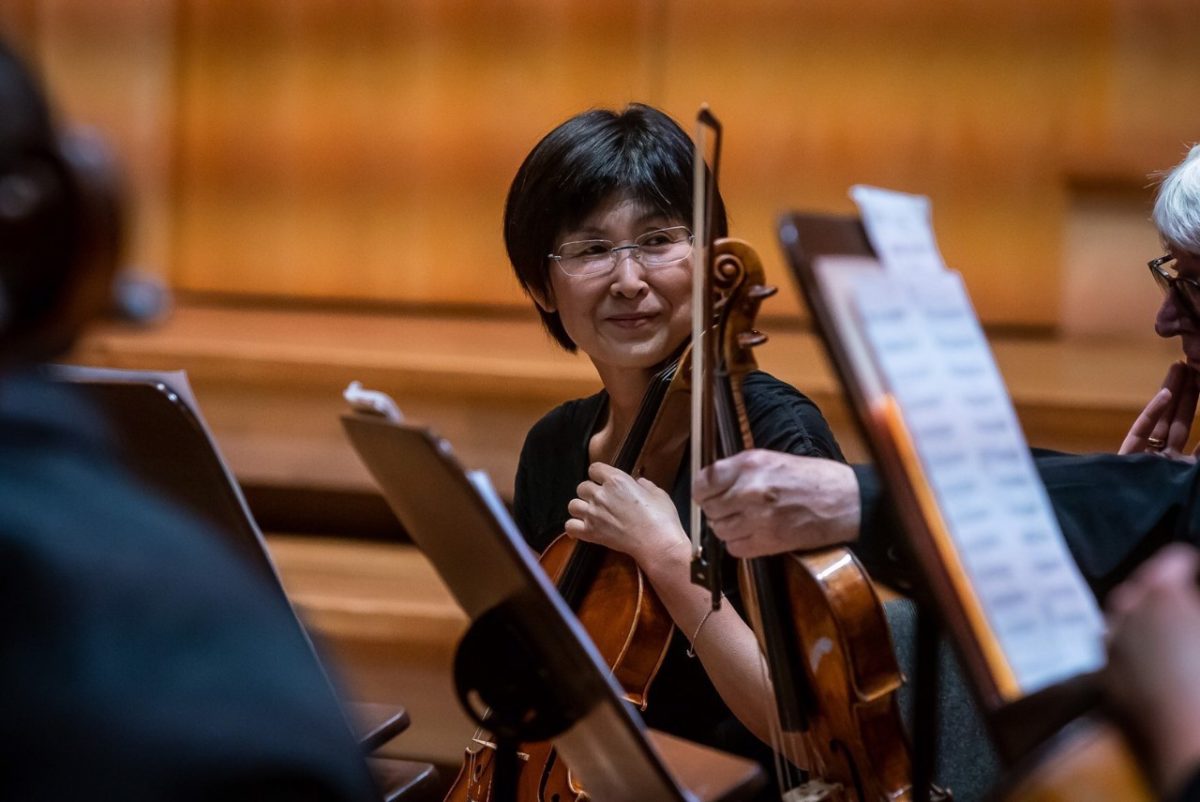
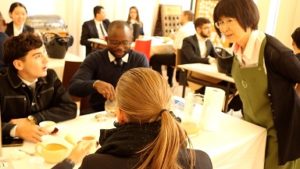
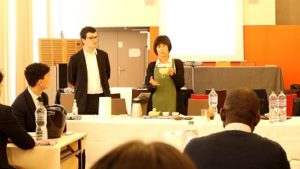
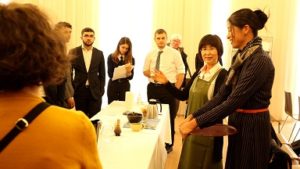
What an interesting tea career story, unusual and brilliant, great stuff and very inspiring!
First time I read that Japanese tea is “easy”, that should to be widely promoted ! to attract more consumers to discover these delicious cups !
Enjoyed this story, Anne! I think all tea growing regions need an ambassador like Ms Misako!